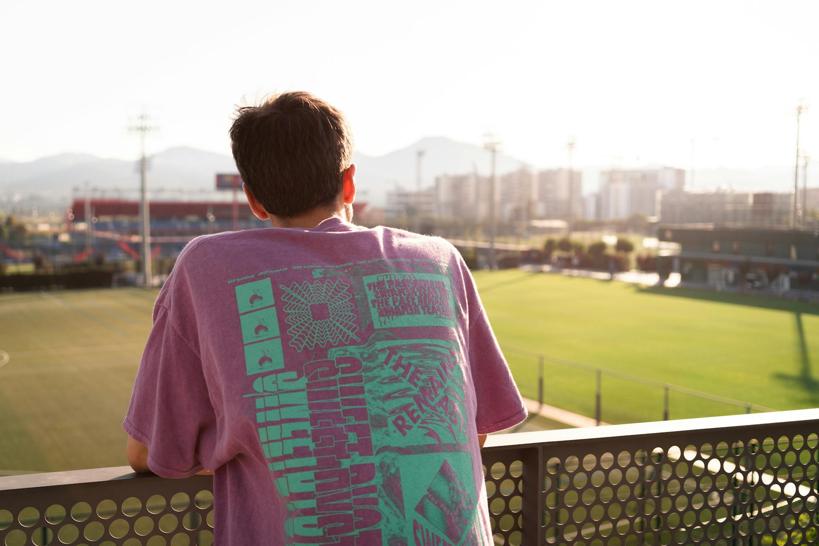Understanding Artwork Specifications: A Guide for Custom Clothing Designers
Posted on 26 June 2024

For designers venturing into the world of custom screen-printed and embroidered apparel, understanding artwork specifications isn't just a technical requirement—it's the foundation of ensuring your vision comes to life exactly as imagined. Artwork specifications serve as the blueprint for transforming your designs from digital files to tangible, high-quality garments. Without adhering to these specifications, the risk of encountering design mishaps increases, potentially leading to delays, increased costs, and products that fall short of expectations.
In this guide, we will navigate the essential aspects of artwork specifications to help you design custom clothing, from choosing the right file formats and colour codes to understanding the significance of resolution and size adjustments. Whether you're a seasoned designer, just starting out, or just want a chance to show off your fandom, mastering these elements is crucial to ensuring your artistic intentions are perfectly translated onto fabric, setting the stage for your creations to shine.
Section 1: Understanding Artwork Specifications
Artwork specifications are the detailed guidelines and requirements for preparing your design files for printing or embroidery. These artwork requirements for custom clothing ensure that your artwork can be accurately reproduced on fabric, maintaining the integrity of your design. Proper specifications help avoid common issues like pixelation, colour discrepancies, and incorrect placement, ultimately leading to a more professional and polished final product.
Section 2: Common Artwork Formats
When it comes to screen printing t-shirts and custom apparel, the format of your artwork file is crucial. Here are the most commonly used formats:
- AI (Adobe Illustrator): Ideal for vector designs, allowing for infinite scalability without loss of quality. Preferred for both screen printing and embroidery.
- PSD (Adobe Photoshop): Suitable for raster images and complex designs. Ensure layers are properly organized, and the resolution is high.
- PDF (Portable Document Format): Versatile and widely accepted. Maintain vector elements and high resolution.
- EPS (Encapsulated PostScript): Another vector format that retains quality and is compatible with most design software.
Each format has its strengths, and choosing the right one depends on the nature of your design and the printing method.
Section 3: Resolution and Size Requirements
Resolution plays a vital role in the quality of your printed or embroidered design. For screen printing, a resolution of at least 300 DPI (dots per inch) is recommended. This ensures that your design appears crisp and detailed. For embroidery, the resolution is less critical, but the design should be clear and not overly complex, as fine details may be lost in the stitching process.
Size matters, too. Ensure your artwork is created at the actual size it will be printed or embroidered. This helps maintain proportions and avoid distortion. Always check with your printer for specific size requirements, as these can vary.

Section 4: Color Specifications
Accurate colour reproduction is one of the essential things to keep in mind when designing shirts. Understanding colour models is key:
- RGB (Red, Green, Blue): Used for digital displays. Convert to CMYK for printing.
- CMYK (Cyan, Magenta, Yellow, Key/Black): Standard for printing. Ensure your design uses this model for accurate colour output.
- Pantone Colors: For precise colour matching, it is especially useful in screen printing. Specify Pantone colours to ensure consistency across different print runs.
Section 5: Placement and Scaling of Artwork
Proper placement and scaling of your artwork are critical for the final appearance of your custom apparel. Consider the type of garment and its unique features:
- T-shirts: Centered designs are common, but consider other placements like the pocket area or back.
- Hats: Typically require smaller, more simplified designs due to limited space.
- Hoodies: Allow for larger, more intricate designs on the back or front.
Scaling your artwork to fit various sizes ensures that your design looks good on all garments, regardless of size. Test your design on different sizes to check for any scaling issues.
Section 6: Preparing Artwork for Submission
Before submitting your artwork, follow these steps to ensure it's ready for production:
- Check Resolution and Size: Confirm your artwork meets the required resolution and is at the correct size.
- Convert Colors: Ensure your colors are in CMYK or Pantone format.
- Outline Text: Convert all text to outlines to avoid font issues.
- Flatten Layers: For raster files, flatten layers to simplify the file.
- Include Bleed and Trim Marks: If needed, add these to avoid cutting issues.
Section 7: Communicating with Your Printer
Clear communication with your printer is essential to avoid misunderstandings and ensure a smooth production process. Provide detailed information about your design, including:
- Artwork Specifications: File format, resolution, colours, and size.
- Placement Instructions: Exact location and orientation on the garment.
- Special Instructions: Any additional details like specific threads for embroidery or special printing techniques.
In Conclusion
Understanding and following artwork specifications is crucial for any custom clothing designer. By paying attention to file formats, resolution, colour models, and proper preparation, you can ensure that your designs are reproduced accurately and look stunning on the final product. Investing time in mastering these guidelines will save you from costly mistakes and enhance the quality of your custom apparel projects.
